
Bushrangers were originally escaped convicts in the early years of the British settlement of Australia who used the bush as a refuge to hide from the authorities. By the 1820s, the term had evolved to refer to those who took up "robbery under arms" as a way of life, using the bush as their base.

Kate Barker, better known as Ma Barker, was the mother of several American criminals who ran the Barker–Karpis Gang during the "public enemy era" when the exploits of gangs of criminals in the Midwestern United States gripped the American people and press. She traveled with her sons during their criminal careers.
The Black Mafia, also known as the Philadelphia Black Mafia (PBM), Black Muslim Mafia and Muslim Mob, was a Philadelphia-based African-American organized crime syndicate. The organization began in the 1960s as a relatively small criminal collective in South Philadelphia, known for holding up neighborhood crap games and dealing in the illegal drug business, but at its height of operation in the early 1970s until about the early 1980s, it managed to consolidate power and control a large portion of criminal activity in various African-American neighborhoods throughout Philadelphia and the Delaware Valley, including South Jersey, Chester, and Wilmington. In addition to drug trafficking, burglary, and armed robbery, the Black Mafia was also engaged in traditional organized crime activities such as political corruption, extortion, racketeering, prostitution, loansharking, number running, and other illegal gambling rackets.
The Dutch Mob was a New York pickpocket gang during the late nineteenth century.
The Tenth Avenue Gang was a New York City street gang and later became the city's first train robbers.

The Whyos or Whyos Gang, a collection of the various post-Civil War street gangs of New York City, was the city's dominant street gang during the mid-late 19th century. The gang controlled most of Manhattan from the late 1860s until the early 1890s, when the Monk Eastman Gang defeated the last of the Whyos. The name came from the gang's cry, which sounded like a bird or owl calling, "Why-oh!"
The Irish Mob is a usually crime family-based ethnic collective of organized crime syndicates composed of primarily ethnic Irish members which operate primarily in Ireland, the United States, the United Kingdom, Canada and Australia, and have been in existence since the early 19th century. Originating in Irish-American street gangs – famously first depicted in Herbert Asbury's 1927 book, The Gangs of New York – the Irish Mob has appeared in most major U.S. and Canadian cities, especially in the Northeast and the urban industrial, including Boston, New York City, Philadelphia, Pittsburgh, Baltimore, Cleveland, and Chicago.
Egan's Rats was an American organized crime gang that exercised considerable power in St. Louis, Missouri, from 1890 to 1924. Its 35 years of criminal activity included bootlegging, labor slugging, voter intimidation, armed robbery, and murder. Although predominantly Irish-American, Egan's Rats did include a few Italian-Americans and some Jewish immigrants, most notably Max "Big Maxie" Greenberg.

James T. Licavoli, also known as "Jack White" or "Blackie", was an American mobster based in Cleveland, Ohio, and one of the earliest organized crime figures to be convicted under the Racketeer Influenced and Corrupt Organizations Act.
George Leonidas Leslie (1842–1878) was an architect turned bank robber.
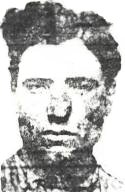
The Los Angeles crime family, also known as the L.A. Mafia or the Southern California crime family, is an Italian-American organized crime syndicate based in Los Angeles as part of the larger Italian-American Mafia. Since its inception in the early 20th century, it has spread throughout Southern California. Like most Mafia families in the United States, the Los Angeles crime family gained power bootlegging alcohol during the Prohibition era. The L.A. family reached its peak strength in the 1940s and early 1950s under Jack Dragna, although the family was never larger than the New York or Chicago families. The Los Angeles crime family itself has been on a gradual decline, with the Chicago Outfit representing them on The Commission since the death of boss Jack Dragna in 1956.
The Whittemore Gang was a group of bank robbers active in the Mid-Atlantic and Eastern United States during the mid-1920s. Led by Richard Reese Whittemore, the gang, including his wife Margaret, went on a year-long crime spree committing payroll, bank and jewelry robberies in Maryland and New York before their capture in 1926.
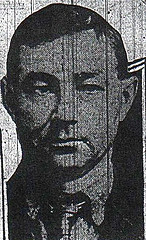
Herman Karl Lamm, known as Baron Lamm, was a German-American bank robber. A former Prussian Army soldier who immigrated to the United States, Lamm believed a heist required all the planning of a military operation. He pioneered the concepts of "casing" a bank and developing escape routes before conducting the robbery. Using a meticulous planning system called "The Lamm Technique", he conducted dozens of successful bank robberies from the end of World War I.
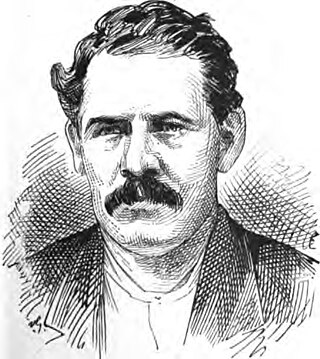
William O'Brien, better known as Billy Porter but also known by the alias William or Billy Morton, was an American burglar and underworld figure in New York City during the mid-to late 19th century. He and partner Johnny Irving were longtime members of the Dutch Mob along with Little Freddie and Michael "Sheeny Mike" Kurtz. He was present during the 1883 gunfight at Shang Draper's saloon in which Irving was shot and killed by rival John "Johnny the Mick" Walsh. O'Brien then killed Walsh and was himself gunned down by Shang Draper. Although surviving his wounds, he was tried for, and acquitted of, Walsh's death.

James "Old Jimmy" Hope was a 19th-century American burglar, bank robber and underworld figure in Philadelphia and later New York City. He was considered one of the most successful and sought after bank burglars in the United States during his lifetime as well as a skilled escape artist for his repeated breakouts from Auburn State Prison in New York.
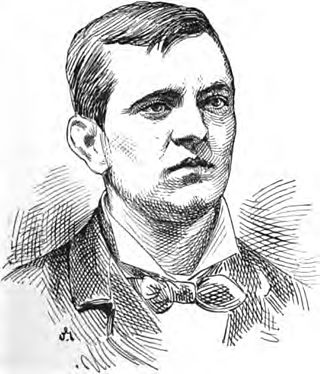
John "Johnny" Hope (1856–1906) was a 19th-century American burglar, bank robber and pickpocket. The son of James "Old Jimmy" Hope, he was alleged to have been associated with his father and the George Leslie Gang. He was among those arrested for the 1878 robbery of the Manhattan Savings Institution although he and Billy Kelly were the only men actually sent to prison for this crime.
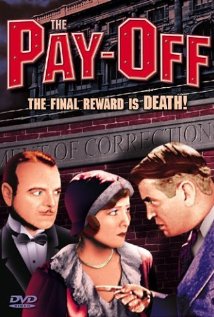
The Pay-Off is a 1930 American pre-Code crime drama film directed by Lowell Sherman, who also starred in the film along with Marian Nixon and Hugh Trevor. The screenplay was adapted by Jane Murfin, along with Samuel Shipman and John B. Hymer, based on Shipman and Hymer's 1927 play, Crime.

The Peaky Blinders were a street gang based in Birmingham, England, which operated from the 1880s until the 1910s. The group consisted largely of young criminals from lower- to middle-class backgrounds. They engaged in robbery, violence, racketeering, illegal bookmaking, and control of gambling. Members wore signature outfits that typically included tailored jackets, lapelled overcoats, buttoned waistcoats, silk scarves, bell-bottom trousers, leather boots, and peaked flat caps with blades hidden in them.

David Thai,, is a Vietnamese-born American gangster who was the founder and leader of the notorious Born to Kill gang during the late 1980s and early 1990s. He was also responsible for running a massive illegal counterfeit watch operation and at his peak controlled the market and distribution of counterfeit watches in New York by means of blackmail and extortion. He was the official leader of Born to Kill from 1988 until his arrest in 1991, which was the combination of months of investigation by the United States Bureau of Alcohol, Tobacco, Firearms and Explosives (ATF) in conjunction with the aid of a former gang member who defected from the gang and became an undercover informant, helping secure the convictions of David Thai and several of his high-ranking officers.
Mikhail Ivanovich Ustinovich is a Russian criminal and serial killer. An infamous Muscovite robber during the early 1990s, he attacked shops, apartments and currency exchange points.











